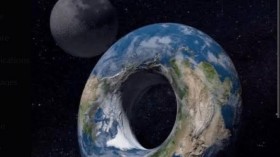A new Stanford study proposes a plan that will have the state of California running entirely on renewable energy by 2050, creating a healthier environment, generating jobs and stabilizing energy prices.
The research team contends that it is both technically and economically possible to convert California's infrastructure to one powered by clean, renewable energy.
They outline their plan for a sustainable, inexpensive and reliable energy supply in the journal Energy.
"If implemented, this plan will eliminate air pollution mortality and global warming emissions from California, stabilize prices and create jobs -- there is little downside," lead author Mark Z. Jacobson, a Stanford professor of civil and environmental engineering, said in a statement.
The proposal will reportedly fulfill all of the state's transportation, electric power, industry, and heating and cooling energy needs with renewable energy by 2050.
The results take into account factors such as jobs created, land and ocean areas required, policies needed for infrastructure changes, as well as provides new estimates of air pollution mortality and morbidity impacts and costs based on multiple years of air quality data.
Particularly, wind, water and sun methods would be beneficial. At first they would increase costs, but eventually over time they would be more economical because they eliminate fuel costs - California's power demand would drop 44 percent.
On top of that, it would create 220,000 jobs, generate $12 billion in revenue annually and even reduce air pollution-related deaths by about 12,500 each year.
Other means of renewable energy described in the plan include wind turbines, geothermal plants and rooftop photovoltaic systems. According to the study, 55.5 percent of the state's energy would come from solar, 35 percent from wind and the remainder from a combination of hydroelectric, geothermal, tidal and wave energy.
"The technologies needed for a quick transition to an across-the-board, renewables-based statewide energy system are available today," said Anthony Ingraffea, a Cornell University engineering professor and study co-author. "Like New York, California has a clear choice to make: Double down on 20th-century fossil fuels or accelerate toward a clean, green energy future."
© 2024 NatureWorldNews.com All rights reserved. Do not reproduce without permission.





